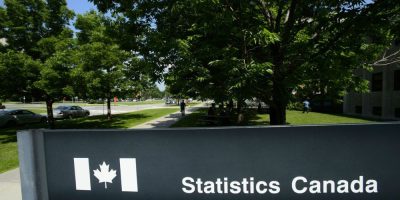The Bank of Canada held its benchmark interest rate steady at 2.75 per cent Wednesday as policymakers keep waiting for more clarity on how tariffs will impact the economy.
“Uncertainty remains high,” Bank of Canada governor Tiff Macklem said in prepared remarks after the release of the rate decision.
“At this decision, there was a clear consensus to hold policy unchanged as we gain more information.”
Economists and financial markets widely expected the second consecutive hold.
Barrie's News Delivered To Your Inbox
By submitting this form, you are consenting to receive marketing emails from: Central Ontario Broadcasting, 431 Huronia Rd, Barrie, Ontario, CA, https://www.cobroadcasting.com. You can revoke your consent to receive emails at any time by using the SafeUnsubscribe® link, found at the bottom of every email. Emails are serviced by Constant Contact
Macklem noted there had been positive developments on the tariff front since the central bank’s April decision, but trade restrictions remain and new import duties are still being threatened.
Wednesday marked the start of new 50 per cent tariffs on steel and aluminum imports into the United States — double the previous rate.
The Bank of Canada keeps its policy rate elevated when it wants to discourage spending to tamp down inflation and lowers the rate when it wants to stimulate the economy.
Global trade disruption tied to the United States’ tariff campaign, and Canada’s retaliatory response, can have the effect of both raising prices and hampering growth.
Macklem reiterated that the Bank of Canada would be “less forward-looking than usual” and more attuned to risks.
In April, that meant forgoing a central forecast for inflation and the economy in the central bank’s quarterly monetary policy report, instead publishing two illustrative “scenarios” for how various tariff situations could play out for Canada.
Macklem said there was a “diversity of views” about the direction of monetary policy heading forward among the central bank’s governing council.
But he said that, “on balance,” the council felt there was room for the Bank of Canada to lower its policy rate if there were signs the tariff dispute was starting to weaken the economy while price pressures remain contained.
Macklem signalled the Bank of Canada would try to strike a balance going forward.
“We will continue to support economic growth while ensuring inflation remains well controlled,” he said.
While the economy topped the Bank of Canada’s expectations in the first quarter of the year and annual inflation dipped back below two per cent in April, the central bank said it sees signs of concern beneath the headline figures.
Inflation dipped to 1.7 per cent in April largely thanks to the federal government’s removal of the consumer carbon price, which drove down prices at the gas pump. Without including taxes, inflation would have stood at 2.3 per cent in the month, up from 2.1 per cent in March and surpassing the central bank’s expectations.
There was some “unexpected firmness” in the latest price data, the central bank said, particularly in rising core inflation figures.
Macklem said that while it’s “still too soon” to the see the impact of retaliatory tariffs in the consumer price data, signs of a resurgence in underlying pressures “may reflect the effects of trade disruption.”
The first quarter real gross domestic product figures also beat the Bank of Canada’s forecasts at 2.2 per cent annualized; that growth was largely thanks to businesses rushing to beat the tariffs. Those effects will reverse in the ensuing months, Macklem warned, “so the second quarter is expected to be much weaker.”
Trade-sensitive sectors of the economy are meanwhile showing some labour market weakness, and housing resales and government spending are also slowing down. Spending by Canadian businesses and households has shown some “resilience in the face of U.S. tariffs,” Macklem said, but he added “they are likely to remain cautious.”
The central bank will be watching the tariff dispute’s impact on inflation as it gauges future policy decisions.
The Bank of Canada’s next interest rate decision is set for July 30, alongside a new monetary policy report.
This report by The Canadian Press was first published June 4, 2025.





